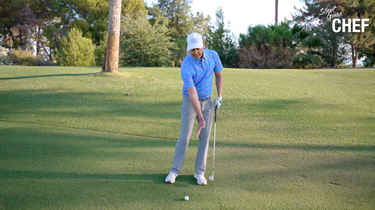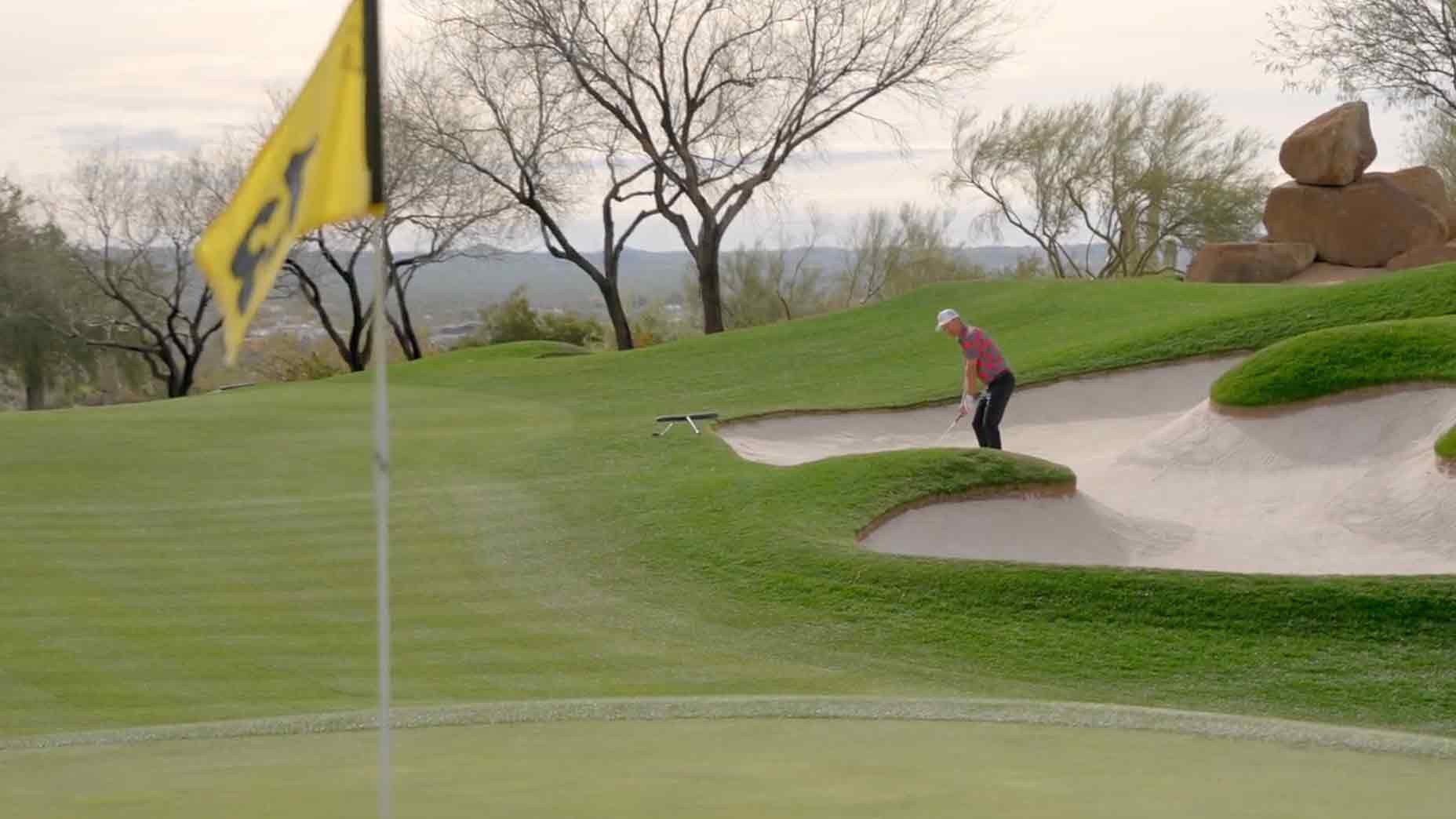
I don’t know about you, but anytime I find myself within 75-100 yards of the green, I completely overthink my wedge shot.
Although it appears to be an easier shot on paper, when you throw in factors like choosing the right club, determining the proper swing length, and understanding how to put a little spin on the ball, it’s easy to second-guess your entire game plan.
Full transparency, this wedge shot from this distance is killing my game right now, leaving me with longer putts to save par than I’d like to admit.
So how can I (and other amateur players like yourself) correct the issue? By watching the video above, where Parker McLachlin, aka the Short Game Chef, provides some go-to tips.
Walking through everything from setup to backswing and follow through, McLachlin shares a more modern approach to dialing in these 75-yard shots. So take a look below to see what he has to say.
How to hit masterful 75-yard wedge shots
In the video, McLachlin asks many of the standard questions every golfer should go through before hitting a wedge shot.
“What club am I going to choose? What backswing length am I going to choose? How fast am I going to go through it? These are all the questions that are going through my mind as I’m looking at this shot,” he says. “So I’ve got a couple of options, really.”
After breaking down his club options — which includes the 52-degree, 56-degree, and 60-degree — McLachlin lands on the 60, saying it’ll allow him to put some spin on the ball, while helping him avoid a low ball-flight.
“I’m never going to use the pitching wedge or the 52-degree wedge from this distance, so it’s [either] the 56 or the 60,” he adds.
“For me, I’m going to go with the 60-degree. I want to be able to spin this ball just a little bit. I don’t want to fly this thing in there too low without much spin.”
Once he’s decided on the best club choice for this specific wedge shot, McLachlin thinks about how high he wants to hit the shot, how much spin he really wants to put on the ball, and what his backswing and follow through should look like.
He goes into great detail about each, saying a swing at 85-90% is the goal, relying on an open clubface to execute the result he wants.
“I’m going to take this [backswing] about 85-90% of the way back, with a little bit of an open face, and some good speed on my rotation on the way through,” he says. “I want to access a little more spin, and I want to access a little more freedom and acceleration on the way through.
After hitting his ball, McLachlin reminds viewers how important swing speed is on a wedge shot like this. Without it, a player will have less distance control — which could result in watching the ball roll off of the green.
“If I want spin, I’ve got to have speed in my swing. They always go hand in hand.
“That all starts with having a nice, structured backswing,” he adds. “So on a 75-yard shot, clubface should be a little bit open, [backswing] feels like it’s about 90%, and I’m really accelerating on the way through to provide that spin and avoid that low ball flight.”
For more tips from the Short Game Chef, check out McLachlin’s website.
All of our market picks are independently selected and curated by the editorial team.
If you buy a linked product,
GOLF.COM may earn a fee. Pricing may vary.
Short Game Chef Membership
Rethink your short game with the help of Parker McLachlin, aka Short Game Chef. McLachlin’s a PGA Tour winner and short game maestro, cooking up modern ingredients to strengthen your shots around the green. From conquering thick rough to hitting masterful bunker shots, register now and get 20% OFF for FULL access to the Chef’s kitchen. Your scorecard will thank you!











